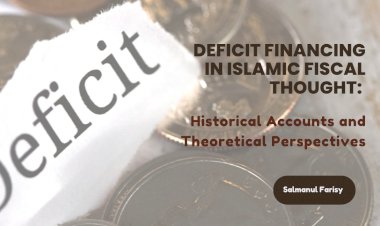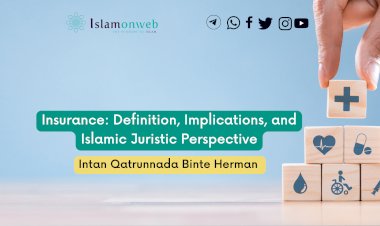Innovative Horizons in Waqf: Discovering Drivers, Key Elements, and Proven Models of Success
Drivers and Elements of Innovation
The six drivers for innovation in non-profit organisations are identified[1]:
- Adapting to rapidly changing environments.
- Giving service users the best value
- Delivering extraordinary results.
- Becoming thought leaders and policy pushers.
- Increasing employee satisfaction and retention
- Increasing organisational profile in a competitive marketplace.
Some significant elements that need to be ingrained in the innovative strategies from an Islamic perspective are given below:
- This innovation should be based on the integration of a combination of good traditional elements and beneficial contemporary methods (al-qadīm al-ṣāliḥ wa al-jadīd al-nāfiʿ).
- Novelty is the fundamental feature of innovation, whereas beneficence, effectiveness, efficiency and quality are its core elements from an Islamic perspective. Principles of justice and equity are crucial for any innovation in waqf practices.
- Public interest is the fundamental axis of maqāṣid al-sharīʿah, and so is of waqf. Maslaḥah (welfare) means the achievement of benefit and the repulsion of harm. It should be the governing principle of innovation.
- In addition, Sharīʿah is, as a whole, mercy for the world, therefore being merciful is an intrinsic characteristic of Sharīʿah rulings. Denial of this fundamental happens to be the nullification of the maqāṣid al-sharīʿah. [2] The element of mercy should permeate innovative strategies.
- In innovation, the important concern is its conformity to the jurisprudential pillars and conditions. Waqf being an Islamic institution, its revival can be accepted without a solid and authentic juristic grounding (al-takyīf al-Sharʿī). In other words, strict adherence to the juristic parameters and arranging in accordance with the maqāṣid al-sharīʿah is inevitable.
- Collaboration and synergised initiatives with various stakeholders from society.
- Adequate use and proper investment of waqf assets.
- Visionary leadership and vibrant management: Leadership is doing the right things and management doing things right.
- Engagement with stakeholders in the social and financial systems.
Successful Models of Innovation
To begin with, the innovation here does not imply inventing something new which is not found anywhere in the world. Rather, each initiative that helped to solve a problem, big or small, or to improve the offering of services and goods. As a subsequent step, it has to move to the next step thus to reach groundbreaking models of waqf practices.
Undeniably, in some parts of the world, desirable and effective models of waqf practices can be found, for example, Kumpulan Waqaf An-Nur Berhad, IIUM Endowment Fund and five waqf entities under Islamic Development Bank in Saudi Arabia. Waqaf An-Nur Corporation (WANCorp), founded on October 25, 2000, focuses on managing assets and shares of waqf under Johor cooperation. “WANCorp declares all income earned as dividend and distributes the benefits with 70:25:5 formulae, of which 70% of the benefit goes back to JCorp for reinvestment and human capital development, 25% goes to WANCorp for Fisabilillah and 5% is distributed to Islamic Religious Council of Johor”.[3] This strategy equips the company to maintain steadfast development and produce more waqf benefits.
IIUM Endowment fund, established on March 15, 1999, at International Islamic University Malaysia, delivers assistance to needy students to meet their needs of tuition fees and the living cost of studying at the university. “IEF has been innovative in generating income by introducing the Kafalah program, which happens to be one of its major cash collection activities. It also has purchased 12 units of Putra Villa Condominium which are to be rented out at monthly rental rates ranging from RM2000 to RM2500 per unit. In addition, the Azman Hashim complex is also expected to generate a steady income flow of RM0.51 million per year to IEF”.[4]
The Islamic Development Bank experimented with various initiatives to foster the waqf sector in Muslim and non-Muslim countries. This experiment seems to be successful and innovative, for example, one of its flagship programs is the Sustainable Villages Program (SVP), a crucial project with a profound social cause which is the eradication of poverty.[5]
Waqf in Kuwait leads the way with its remarkable performance, flexibility in legal injunctions, facilitations by the government, autonomy of the waqf department in decision-making, encouraging people to establish new waqf and establishing complaint waqf projects, and funding in research and charity initiatives.[6]
Yayasan Iqra (Iqra Foundation) foundation in Malaysia promotes wealth creation through Muslim endowment principles and works to make Islamic endowment Malaysia’s third financial force. “The foundation provides a platform for individuals and the corporate sector to commit shares or financial instruments as an endowment with a portion of the profits returning to the principal sum and the remaining channelled to the community”[7].
Concluding Remarks
New and serious discussions are on the rise regarding the revival of Waqf. The revival should start within the hearts and minds of believers. The change needs to start from the grassroots level. The innovation should focus on realising the objectives of waqf with due diligence to the fiqh principles of the core nature of its religious perspective.
The necessity of innovation is unequivocal due to its extremely poor utilization in some areas. As part of innovation, the extent of waqf utility for the benefit of the ummah in terms of economy, education, healthcare, food security, self-sufficiency, art, science, culture, spirituality and environmental stability needs to be further extensively explored in the light of the needs of contemporary times.
At times, the revival efforts seem like treating the symptoms, not the causes of diseases. In the researcher’s view, a paradigm shift needs to happen in the existing attitude to waqf at a grassroots level and to experiment with innovation in proliferating the benefits of waqf. The problem is not with waqf but with the people around it and their governance. A transition in the modus operandi from traditional and classical to progressive and contemporary is the high need of the hour. Waqf revival can be done by leveraging the use of existing waqf and encouraging Muslims to do more waqf. To propose the innovative application of waqf and expedite sustainable growth, the waqf governance needs to be revised.
The characteristics of innovation and originality are distinctive qualities of human beings. The attitude towards Waqf and its governance needs drastic and transformative changes to sort out its malaise and boost it as a soulful religious and socio-economic catalyst.
Islam demonstrates its concern for people’s welfare not only in this world but also in the hereafter. Waqf can be a vital vehicle and engaging platform to cater to the needs of socio-economic development. Waqf represents a distinguishable segment of Islamic civilization with a pivotal role in the revival of Islamic society. Waqf promotes the core idea of sustainability. Waqf is about preserving the property and spreading its fruits and benefits. Endowed property simultaneously and inherently ingrates the features of preservation and investment.
This study proves only that innovation in the endowment sector is nothing short of a necessity in the current times. The authorities in various regions and countries need to assemble the brilliant minds of the ummah to explore the avenues and strategies of innovation and the prospective methods of its implementation.
(This article is part of a research work which was originally published on AWQAF Journal, (44). pp. 14-52. ISSN 1609-4662, published from Kuwait).
Endnotes
[1] Elisha Evans and Joe Saxton, Innovation Rules! A Roadmap to creativity and innovation for non-profit organisation, (nfp synergies, 2008). Retrieved from https://nfpsynergy.net/innovation-rules-roadmap-creativity-and-innovation-not-profit-organisations.
[2] Shams al-Dīn ibn al-Qayyim, Iʿlām al-Muwaqqiʿīn ʿan Rabb al-ʿĀlamīn, ed. Taha Abd al-Ra’ūf (Beirut: Dār al-Jīl, 1973), vol 3, p3. (Translation retrieved from the book, Jasser Auda, Maqasid al-Sharīʿah as Philosophy of Islamic Law; A Systems Approach, (London, Washington: IIIT, 2008), xxii.
[3] Norma Md Saad, Salina Kassim, and Zarinah Hamid, “Best practices of waqf: Experiences of Malaysia and Saudi Arabia” Saad, Journal of Islamic Economics Lariba (2016). vol. 2, issue 2: 57-74
DOI : 10.20885/jielariba.vol2.iss2.art5. 59.
[4] Ibid, p. 73.
[5] Ibid.
[6] Aimu Fadzirul Kamarubahrin, Abdullah Mohammed Ahmed Ayedh, “Critical Review on Waqf Experiences: Lessons from Muslim and Non-Muslim”, IQTISHADIA (Journal of Islamic Economics and Business), Vol 11, No 2 (2018),
[7] Ibid.
About the author
Sayyed Mohamed Muhsin, PhD is Assistant Professor of Islamic jurisprudence at the International Islamic University Malaysia (IIUM), Kuala Lumpur. He also serves as Editor-in-Chief of Islamonweb-English (https://en.islamonweb.net/)
Disclaimer
The views expressed in this article are the author’s own and do not necessarily mirror Islamonweb’s editorial stance.
























Leave A Comment